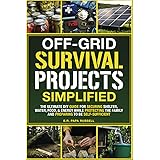Imagine this: you’re driving along, minding your own business. Suddenly, an unexpected obstacle appears. Your heart races, your palms sweat. What do you do?
Life throws unexpected challenges. We all hope to avoid truly dire situations. Yet, being ready is always wise. This article expands on the crucial survival tips shared in the video above. These insights offer pathways to navigating modern dangers. Learning these skills boosts your emergency preparedness significantly.
Essential Survival Tips for Modern Life
The Myth of the Falling Elevator
Fear of falling elevators grips many. However, this scenario is incredibly rare. Modern elevators boast many safety features. These systems prevent catastrophic free falls.
The video mentions a 1945 Empire State Building incident. A plane crash severed cables. This caused a 75-floor plummet. Betty Lou Oliver survived, holding a Guinness World Record. Her survival remains truly exceptional.
Physicists suggest lying flat. This action distributes impact force. Yet, it’s hard to achieve in free fall. The floor could also rupture. Think of it like trying to land a fragile package perfectly. It’s nearly impossible to control. Focus on being calm, not on this improbable event.
Embrace the HELP Position for Cold Water
Warmth is vital for survival. Hypothermia strikes quickly, especially in water. It can take hold in mere minutes. The Heat Escape Lessening Posture, or HELP, can be a lifesaver.
This position works best with a life vest. You pull your knees to your chest. Wrap your arms around your torso. This shields your core organs. The HELP position acts like a personal thermal blanket. It traps body heat near your vitals. If in a group, huddle together. This conserves heat and increases visibility. Think of penguins huddling against the cold.
Bystander Effect: Breaking the Silence
Have you witnessed emergencies where people stood by? This is the bystander effect. It’s a powerful psychological phenomenon. People assume someone else will act.
The 1968 Kitty Genovese murder highlighted this. 38 witnesses reportedly did nothing. Responsibility diffuses among the crowd. It’s like everyone expecting someone else to catch a falling ball. To combat this, visualize emergencies. Know your own potential reactions. If you need help, point to one person. Say, “You in the blue jacket, call for help!” This assigns clear responsibility. Awareness can save lives, yours or others’.
Navigating the Treacherous Riptide
Riptides are strong currents. They pull swimmers away from shore. They form from converging waves or sandbar pressures. Spotting them is often difficult.
Conventional wisdom suggests swimming parallel. This takes you out of the current. However, new research offers a different view. A Naval Postgraduate School study found many riptides are circular. Jamie McMahon suggested waiting for the cycle. The current might return you to shore. This cycle often lasts about three minutes. Still, the official line remains: swim parallel. This avoids exhaustion and potential panic. It’s like choosing a side road over a direct, but blocked, highway.
Wildlife Encounters: Stay Safe in Nature
Outdoor adventures carry risks. Wildlife encounters can be dangerous. Aversion is always the best strategy. Prevent confrontations before they start. Store food securely and make noise when hiking. Avoid bear cubs at all costs.
If an attack occurs, identify the bear. Grizzlies are larger and territorial. Play dead in the cannonball position. They often relent if you’re not a threat. Black bears are different. They might view you as prey. Fight back or stand your ground. For cougars, fight back aggressively. They typically stalk their prey. Your aggressive response can deter them. Think of a grizzly as a guard dog, a black bear as a stray cat; their reactions differ greatly.
Escaping a Flooding Car: Time is Precious
Flooding cars present extreme danger. Nearly 400 people die yearly. Water pressure makes doors impossible to open. You have less than a minute to escape.
First, unbuckle quickly. Avoid opening the doors. Instead, roll down your windows immediately. If windows fail, break the glass. Car headrests can be used. Jam a metal prong into the window slit. Pry it back towards you. This applies lateral stress. The safety glass can then fracture. It’s like using a lever to open a stubborn lid. Waiting for the car to fill is an option. This equalizes pressure. However, it’s very risky and requires holding your breath.
Armed Opponents: Your Mind is Your Weapon
Facing an armed opponent is terrifying. Staying calm is paramount. Use psychology to your advantage. Make eye contact with your adversary. This establishes a human connection. It makes it harder to dehumanize you. It’s like breaking through a barrier. Most attackers don’t want to kill. Otherwise, they would have already.
Communicate your actions clearly. Say what you’ll do before you move. Keep them talking if possible. This distracts them. It also provides valuable information. Your goal is de-escalation. Your goal is survival. A calm voice can be more impactful than any sudden action.
The Universal Edibility Test: A Last Resort
Wilderness survival can mean dwindling food. Identifying edible plants is crucial. The Universal Edibility Test exists for this. It involves a trial-and-error process.
Sort plant parts by type. Check for bad smells or skin irritation. Boil a small piece. Take a tiny bite and wait 15 minutes. Watch for symptoms. Many survival experts endorse this. However, it carries extreme risks. Even small exposure to toxic plants can be deadly. Think of it as a desperate gamble. Always prioritize known edible plants. This test should truly be your final option. Better emergency preparedness includes plant identification skills.
Gas Attacks: Unlikely But Possible
Biological or chemical attacks are rare. Survival chances are slim without a gas mask. Yet, some desperate measures exist. Knowing the gas type is critical.
For chlorine gas, WWI soldiers had a method. They urinated on fabric. Then, they breathed through the moist cloth. Urine’s ammonia compounds react. This can crystallize chlorine gas. However, this can create other toxic fumes. The effectiveness is highly debatable. Sarin gas is another deadly agent. It affects the body’s nervous system. Atropine is an antidote. Some plants contain trace atropine. These include deadly nightshade and cannabis. These are highly risky options. They highlight desperate measures. This is truly a scenario of last, resort survival tips.
Breaking Out of Zipties: Unexpected Freedom
Kidnapping or hostage situations are horrifying. Knowing how to escape bonds can save your life. Zipties are increasingly common. They are lighter than handcuffs.
But zipties have a weak point. This is at the connector. One method: flatten your palms together. Position the connector between your wrists. Raise your arms high. Then, snap them down sharply. Imagine chopping firewood. Keep your arms straight to avoid injury. Another method involves your knee. Bring your knee up. Snap the ziptie against it. It’s like breaking a stick. You might chafe your wrists. However, escaping captivity is paramount. This skill provides an essential piece of personal safety knowledge. It empowers you in extreme situations, crucial for true emergency preparedness.
Life is full of unpredictability. Preparing for the worst empowers us. These survival tips are more than just information. They are tools for resilience. They equip you to face unforeseen challenges. Your ability to act calmly can make all the difference. Stay prepared, stay safe, and always be aware of your surroundings.











